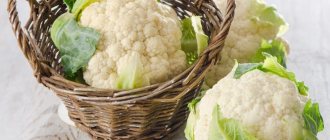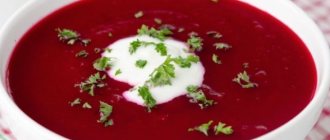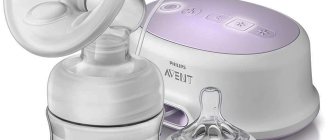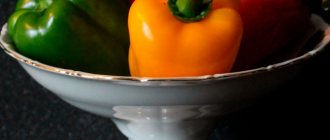Freshly prepared one-ingredient vegetable purees are the best option for starting your baby's first complementary foods. This opinion is shared by many pediatricians, as well as experienced mothers. To introduce a child to adult food, green vegetables are first chosen, the leader among which is zucchini. This agricultural crop is one of the safest, most easily digestible and healthy in terms of children's diet. It is only important to follow a few simple rules for choosing a vegetable and preparing dishes from it for the first feeding.
Introduction to the diet: at what age can vegetables be eaten?
According to WHO recommendations, the first complementary foods can be introduced into a baby’s diet from the 6th month [1], but the schedule of administration depends on individual characteristics. Mother's milk or modern formulas provide the child's body with all the necessary nutrients for up to six months. If the pediatrician diagnoses underweight, this may be a reason to start complementary feeding at 4 months.
Often, porridge is first introduced into a child’s diet, and only then they are offered to try vegetables. Your doctor may recommend starting complementary feeding with vegetables if your baby is overweight.
The best option is to start vegetable feeding with zucchini. This is a hypoallergenic product that is quickly absorbed and does not irritate the delicate gastric mucosa.
Useful properties of the vegetable
Tender zucchini has many valuable qualities:
- Contains a large number of microelements (potassium, magnesium, phosphorus, calcium, sodium, sulfur, copper, iron, zinc, molybdenum).
- The presence of vitamins A (carotene), B1 (thiamine), B2 (riboflavin), C (ascorbic acid), PP (nicotinic acid).
- Gentle on the digestive system due to the special fiber structure of the vegetable. It perfectly softens the gastric mucosa and activates intestinal motility. The baby will definitely not have constipation or painful intestinal colic.
- The diuretic properties of zucchini help the body get rid of excess fluid and salt.
- The product is recommended for physiological anemia, which can be observed in children of the first year of life.
- The high potassium content has a positive effect on the development of the heart muscle, blood vessels, and nerve fibers.
- Low calorie content allows you to avoid prolonged digestion and unnecessary stress on the gastrointestinal tract. This is especially important for overweight children.
- The product is almost completely hypoallergenic - well suited for children prone to atopic dermatitis.
- Contains a minimal amount of sugars compared to other vegetables.
- Good compatibility of the product with other vegetables and meat purees. For older children, you can prepare two-component dishes based on zucchini puree.
How to choose a vegetable for zucchini puree: tips
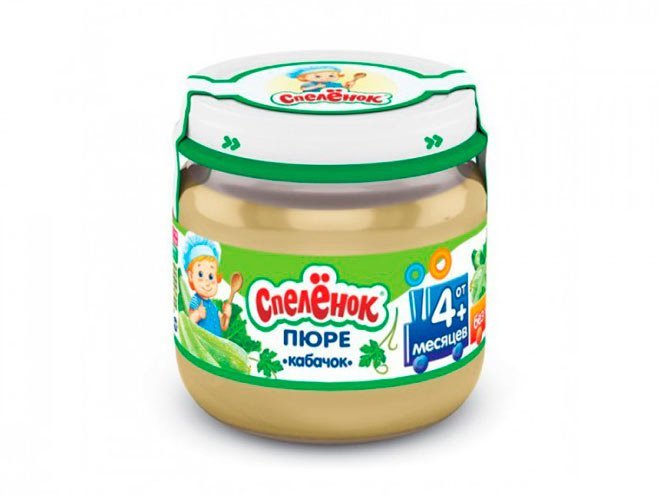
Expert opinion
Sokolova L. S.
Pediatrician of the highest category
Fresh and properly grown vegetables should be placed on the child’s table. It is better to choose young fruits. The safest thing is to grow zucchini for complementary feeding yourself or buy them from the garden from a conscientious gardener.
Product in a jar . It is better to prefer high-quality puree in a jar to a greenhouse specimen from a supermarket. It’s up to the parents to decide which company’s products to choose.
Fresh zucchini
. You need to choose vegetables at the market carefully and meticulously. If the seller cannot tell in detail about the origin and freshness of the goods, most likely he purchased the products in the same place where they are supplied to chain stores.
Frozen zucchini . If the baby was born in the spring and the time for the first vegetable feeding comes during the cold season, you should find out in advance how to prepare frozen purees. Frozen zucchini retains a small amount of vitamins, but it is healthier and safer than store-bought winter vegetables.
Signs of a good zucchini that can be used for baby food
- The skin is smooth, has a glossy sheen, thin and can be easily pierced with a fingernail;
- there are no growths, damage or traces of rot on it;
- the cut of the stalk is smooth, not darkened;
- no dents are formed when pressing on the fruit;
- If you cut a zucchini, small droplets of moisture will appear on the pulp;
- the younger the fruit, the more pronounced its edges are; mature zucchini is smooth;
- the seeds are soft and unripe, and the cut of the vegetable has no veins.
How to make vegetable puree for babies with your own hands?
You can cook zucchini in different ways: for this you can use a double boiler or a slow cooker. How to make zucchini puree for babies? Dishes should not contain spices or fat.
For a baby, a serving of ⅓ or ¼ of a vegetable is suitable. To make food easier to digest, small children are served a first course of zucchini, chopped in a blender. After the baby teethes (this happens at about 8-11 months), it will be enough to mash the cooked healthy zucchini with a fork.
To prepare puree for the first feeding, follow these steps:
- For your baby's first feeding, choose fresh, ripe vegetables.
The most delicious and nutritious baby vegetable puree for complementary feeding is made from the freshest vegetables that are at the peak of ripeness. Choose vegetables with firm flesh and bright color. Avoid bruised or blemished vegetables. - Frozen or canned vegetables can be used to puree baby foods, but they will not have the same nutritional value or taste as purees made from fresh vegetables.
- Any type of vegetable should be pureed, although it is more difficult to puree green vegetables into a smoother puree. Carrots, sweet potatoes, green beans, broccoli, zucchini and any other vegetables with pulp become softer when cooked.
- Wash the vegetables.
By handling them under cold running water, make sure that all traces of dirt are removed. You can use a herbal cleanser if you are cleaning vegetables that have been treated with pesticides. - If necessary, peel the vegetables. Cut off the top and bottom ends of the vegetables with a knife and remove any bruised areas.
- Cut the vegetables into thin slices. Cutting vegetables into slices rather than cubes will reduce their cooking time, and the baby puree will have a more uniform consistency.
- Boil some water in a deep bowl. There is no need to fill it completely, you just need some water to steam the vegetables. Two to four glasses of water are enough, it all depends on the size of the dishes used.
- Steaming vegetables is the best way to preserve nutrients. Boiling vegetables is another option for preparing them, but cooking has been shown to destroy some beneficial vitamins.
- Steam vegetables for 15 - 20 minutes. Fill a special basket with vegetable slices and place it in the pan. Cover the pan to allow the vegetables to begin cooking.
Avoid too many vegetables in the cooking container. You may have to do this in batches.After 15 - 20 minutes, the vegetables should be quite soft.
- If you don't have a special basket, place the vegetable slices in boiling water. Cook for a quarter of an hour or until soft.
- Use a blender. Place 1 cup of cooked vegetables in a blender, adding a little water if necessary to achieve a smoother texture.
- Transfer the puree from the blender into a container used for feeding the baby.
Read more: Keeping goslings from the first days of life at home
The beginning of complementary feeding plays a decisive role both in the functioning of the digestive system and in the overall health of the child. Parents should be very careful about the nutrition of their babies to avoid further problems.
Recipes: how to cook zucchini for first feeding
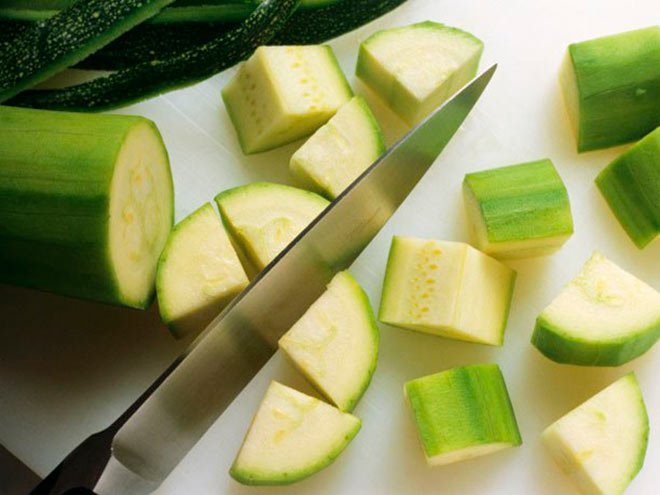
Once you are sure that the vegetable is suitable for complementary feeding, you can begin cooking. Before cooking zucchini for baby food, it should be washed and dried with a paper towel. It is not necessary to cut the skin off a young vegetable. First, cut off the stem and bottom of the fruit, then cut it crosswise and remove the seeds if they are already formed. The remaining pulp is cut into medium-sized cubes.
If you have any doubts about the quality of the vegetable, you can soak the cubes in cold water for one hour. This procedure is used to wash out nitrates from the product.
To prepare complementary foods from zucchini, one fruit is enough. The young vegetable cannot be too large - the output will be from one hundred to two hundred grams of puree. There are two options for how to cook zucchini:
1. Boil in a small amount of water:
- pour hot water into the cubes so that it does not completely cover them;
- then, cover with a lid, cook until tender over medium heat.
2. Steam the zucchini in a slow cooker or in a sieve set over a pan of boiling water. Steaming the dish will take a little longer: three to five minutes. But to preserve vitamins and microelements, the second option is preferable.
How long to cook a vegetable is decided based on its degree of maturity. Young zucchini is boiled for no more than five to seven minutes. If it is overripe, the cooking time will take up to fifteen minutes.
It is easy to determine whether zucchini is ready for complementary feeding: the cubes lose their shape and are easy to crush with a fork.
The cooked mass is cooled and thoroughly ground in a blender. It is not necessary to add liquid; complementary foods should be offered to the child in the form of a homogeneous gruel with a consistency no thicker than kefir. If all the nuances of this simple technology are followed, the baby’s zucchini puree will turn out to be light green or yellowish-green.
That's all you need to prepare zucchini puree for your first feeding. The recipe does not contain any ingredients other than vegetables and water. You can add salt, spices and oils only after the baby gets comfortable with the monoproduct and learns to eat zucchini in combination with other complementary foods.
How to store zucchini puree for future use: preservation
The initial portion of zucchini for the first complementary feeding will be a teaspoon. The remaining puree will have to be thrown away or canned, because storing it in the refrigerator until next time is undesirable. Thirty- or fifty-gram jars with baby food lids are suitable for storing puree, but only if they were not damaged when opened.
Step-by-step instructions for preserving homemade zucchini puree for complementary feeding:
- jars and lids are thoroughly washed with soda (it is better not to use liquid dish detergent);
- while complementary foods are being prepared, sterilize lids and jars on the second burner in boiling water (at least ten minutes);
- then the dishes are taken out of the pan and, turning upside down, the water is allowed to drain;
- The still warm puree is laid out in jars so that there is no air gap left under the lid;
- tightly wrapped jars are left to cool;
- the cooled pieces are put into the refrigerator;
- if everything is done correctly, the lid will bend inward, like on a jar of store-bought complementary foods;
- Such canned food will open with a bang.
Preparing the stock must be done quickly, in parallel with cooking the zucchini. If food has been sitting for some time, it is better not to preserve it. It is acceptable to save one or two jars in order to use them the next day. Such preparations cannot be stored for a long time, much less stored for the winter.
It is better not to use jars for preservation more than once or twice - over time, the lid will fit worse on the thread, and air may get into the puree.
There is no need to re-boil the zucchini food; it is simply heated in a water bath, transferring it to a ceramic or enamel bowl.
Benefits for children
“The main advantage of zucchini is that it extremely rarely causes allergic reactions in children,” says overseas-famous Dr. Sears, author of the book “List of Allergenic Foods.”
Most Russian pediatricians share the same opinion.
Other advantages of zucchini feeding:
- The optimal proportion of potassium and sodium (approximately 100: 1). Potassium controls heart rate, has a beneficial effect on the activity of the child’s nervous and muscular systems, saturates brain cells with oxygen and helps cure allergies.
- Low content of coarse dietary fiber and high content of water. The first complementary food should not irritate the stomach or burden your little one’s intestines with an excessive amount of fiber. And a sufficient amount of water in the composition of zucchini allows you to flush out dangerous toxins from the growing body.
- Zucchini puree has a delicate texture that does not irritate children's palates.
- Along with complementary foods, the child’s body will begin to receive additional doses of copper and iron, which are involved in the formation of microelements in the blood. This is especially important given that in the first year of life, many babies suffer from physiological anemia.
How to freeze zucchini for baby food
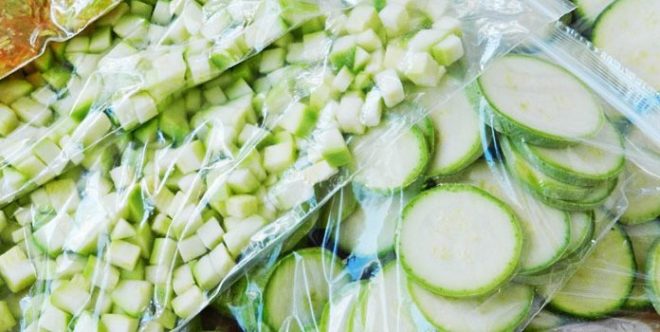
To continue proper and healthy feeding during the winter, you can store vegetables in the freezer. Preparing zucchini for freezing is very simple:
- wash and cut into cubes, as before cooking;
- spread in a thin layer on a flat cup and, covering the top with foil, put in the freezer for an hour;
- then the frozen cubes are transferred to an airtight container and put back until used;
- It is important to use freezer-safe containers or a foil envelope.
It is better to take care of supplies in advance. Freezing zucchini and subsequently preparing dishes from reliable raw materials is more economical and smarter than buying untested products in winter. It is better to cook zucchini that has been frozen for one time only. They should not be allowed to thaw; they must be immediately immersed in hot water.
Contraindications to eating zucchini
There are few contraindications to eating zucchini, but they still exist:
- Food allergies - although rare, zucchini can cause allergies.
- You will have to completely abandon or significantly reduce the proportion of zucchini dishes in your menu not only if you have a food allergy, but also if you have hay fever (allergic rhinitis) to weed pollen (quinoa, wormwood, ragweed, etc.). It's all about the so-called cross allergic reactions - the components of zucchini are similar in structure to weed allergens, which is why the body can “confuse” them: the symptoms of hay fever will intensify or signs of food allergies will appear.
- Like other vegetables, zucchini is contraindicated during acute periods of digestive tract diseases. But it can be administered after a few days to relieve pain, diarrhea or other symptoms.
- Due to its pronounced diuretic effect, zucchini is used with caution for kidney diseases and for disorders of water-salt metabolism - it can only be consumed after consultation with a doctor.
Feeding a baby: how to give zucchini for the first feeding
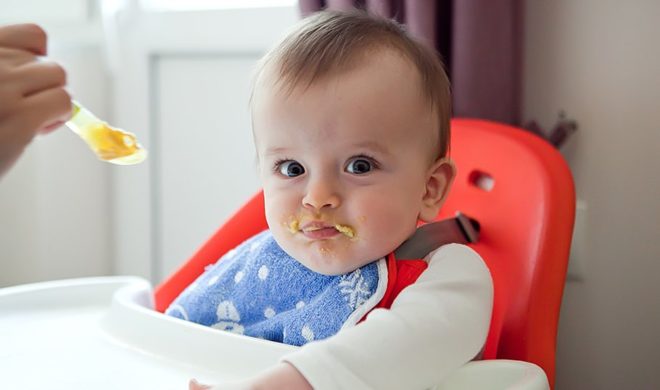
It is better to give zucchini three and a half or four hours after the first morning breastfeeding. If your baby gets hungry, there is a high chance that he will appreciate the taste of zucchini puree.
Rules for feeding a baby new foods
- for the first time, the dish is only given to taste (in the amount of a teaspoon) and the baby is fed additional milk;
- During the day they observe what the reaction to what they eat will be;
- the next day the portion is increased;
- full feeding can be started on the third day if the child has no allergic reaction or pathogenic changes in stool;
Getting to know a new dish takes about a month. At first, food may come out undigested. This means that it is better not to increase the portion for now. But if feeding zucchini goes without problems, after two weeks you can try other vegetables. It is impossible to say right away how long it will take to get used to new food. Each organism is individual.
If your child does not eat zucchini puree, there is no need to be upset. You can try offering him other vegetables recommended for first feeding: cauliflower or broccoli are no less healthy than zucchini.
Reaction to complementary feeding . Signs that you should stop introducing complementary foods and seek advice from your pediatrician:
- rash that appears after feeding;
- vomiting or gag reflex at the sight of puree;
- loose, frequent stools with black or green spots.
In most cases, there is no negative reaction to homemade zucchini puree prepared for the first feeding in compliance with all the rules.
Portions
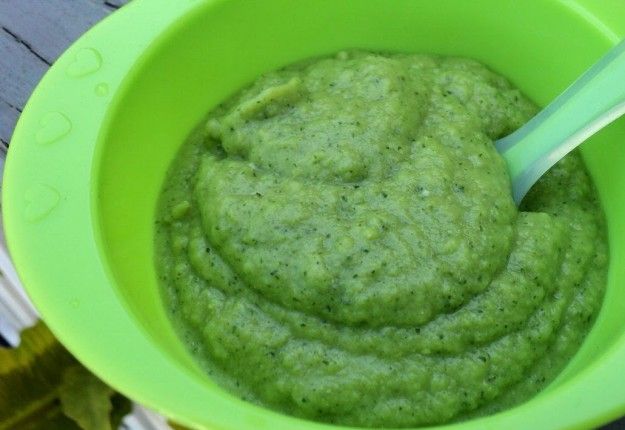
As a first complementary food, ½ teaspoon of one-component puree is enough. It is advisable to offer the product to the baby in the morning to monitor the body’s reaction. However, pediatricians say that there is no cause for concern, since an allergy to zucchini is a rare phenomenon. The portion increases daily until it reaches 100 g.





